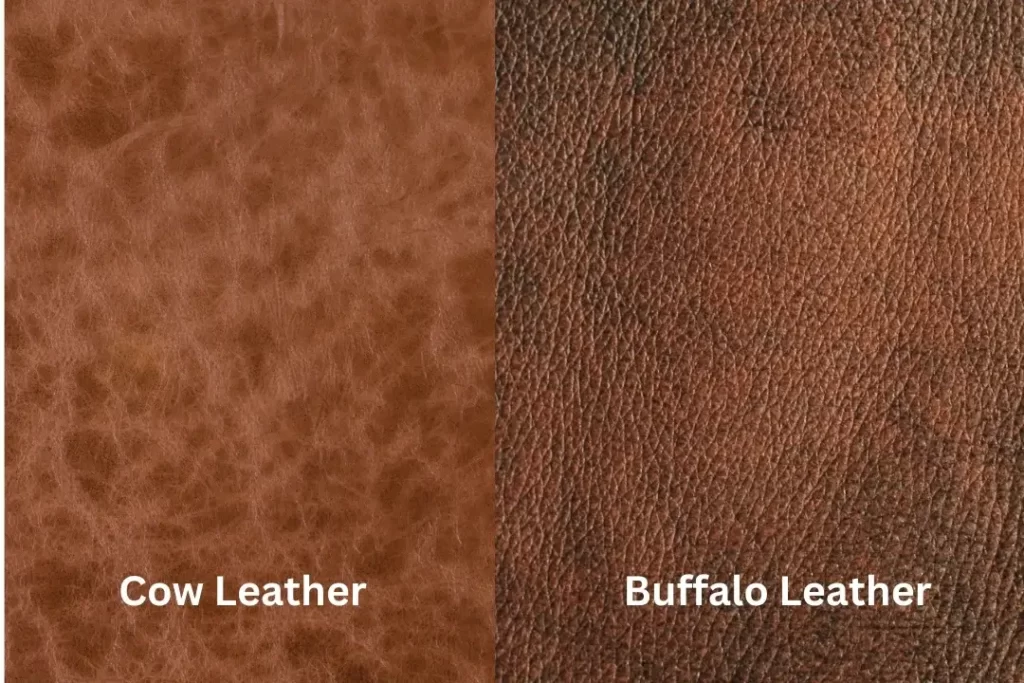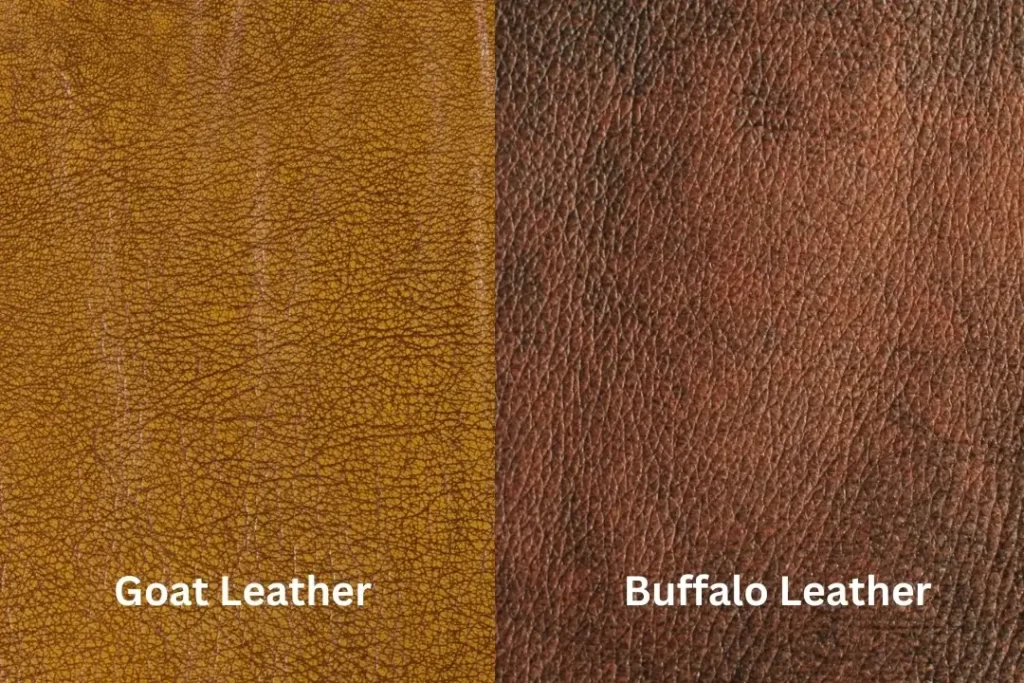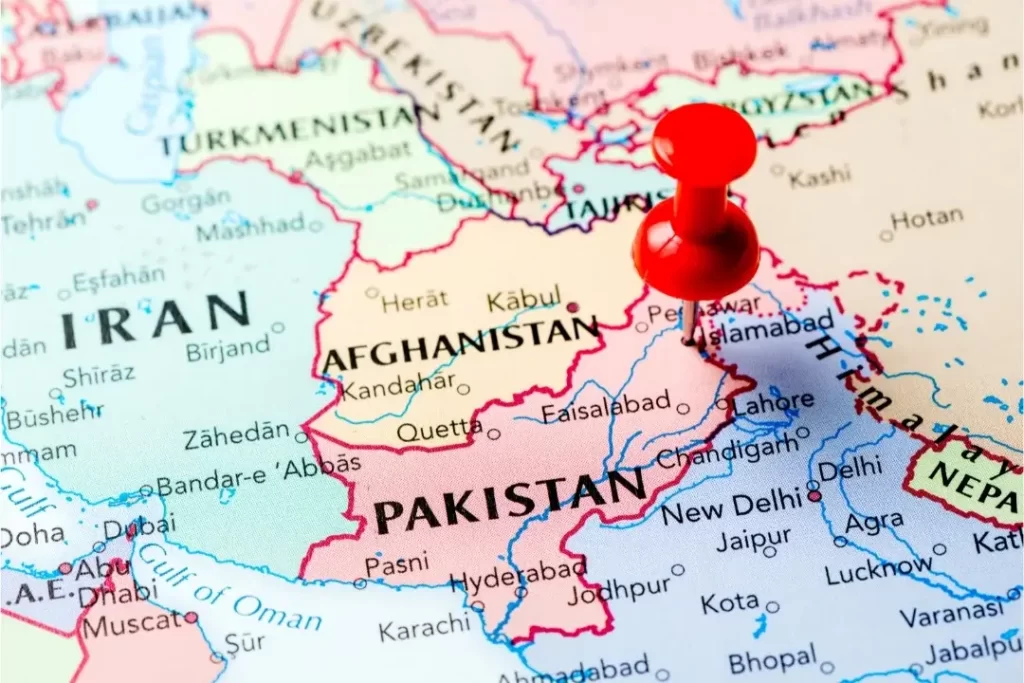
Why Clothing Brands Fail
Top Different Types of Shirts for Women and Men Top Different Types of Shirts for
As you run your hand over the soft, supple surface of a luxurious leather bag or jacket, do you ever wonder where it all began? Buffalo leather, a material that has become synonymous with quality, durability, and style, has a rich history that dates back centuries. From the ancient civilizations of Asia to the rugged American frontier, this versatile material has been used to craft everything from clothing to furniture and even armor. But the benefits of buffalo leather aren’t just historical – they continue to attract brands and entrepreneurs today who recognize its unique properties and appreciate the superior quality it offers. Whether you’re a fashionista, an adventurer, or a leather enthusiast, understanding the different types of buffalo leather available is essential for making informed purchasing decisions. So in this detailed article, we will deeply explore what is buffalo leather? Its features, benefits, comparisons with other leather fabrics, and much more.
To better understand what is buffalo leather? And what is buffalo leather made of? First, let’s start with its story. The story of buffalo leather begins with ancient civilizations in Asia, where it was used to make clothing, footwear, and even tents. Its durability and ability to withstand harsh climates made it an ideal material for nomadic tribes, who relied on it to protect them from the elements. As trade routes opened up, buffalo leather quickly became a valuable commodity, coveted by merchants and traders for its Strength and longevity. In time, it made its way to other parts of the world, including Europe and the Americas, where it continued to be used for a wide range of purposes.

Over time, the production of buffalo leather evolved as new techniques and technologies emerged. Tanning, a process that involves treating animal hides using some chemicals to preserve them and make them more flexible, became more sophisticated, resulting in softer and more supple leather. As the demand for buffalo leather grew, so too did the need for better and more efficient methods of production. Today, buffalo leather is produced using a variety of methods, including vegetable tanning, chrome tanning, and synthetic tanning, each of which offers unique benefits and drawbacks.

From its origins in Asia, buffalo leather has spread across the globe, becoming a popular material for everything from clothing and accessories to furniture and upholstery. Its versatility and durability have made it a favorite of designers and consumers alike, who appreciate its natural beauty and rugged charm. Today, buffalo leather is widely used in both the fashion and the automotive industries, where it is valued for its Strength, durability, and ability to withstand wear and tear. Whether you’re a history buff or a fashionista, understanding the origins and evolution of buffalo leather is key to appreciating its enduring appeal.

Buffalo leather is a type of leather that is derived from the hide of the Buffalo or bison. It is a thick and durable material that is known for its Strength, texture, and natural grain. Buffalo leather is often used in the production of high-quality goods due to its unique characteristics and properties.
Buffalo leather is sourced from various regions around the world, including the North America, Europe, and Asia. The American Buffalo or bison is the most common source of buffalo leather in North America, while water buffalo is the primary source in Asia. The production of buffalo leather involves several stages, including cleaning, tanning, and finishing. The tanning process can be done using vegetable or chrome tanning, depending on the desired characteristics of the final product.
Buffalo leather is a versatile material that is used in a diverse range of industries, from fashion and accessories to automotive and furniture. In the fashion industry, it is often used in the production of high-end jackets, shoes, and bags, thanks to its natural texture and durability. In the automotive industry, buffalo leather is a popular choice for upholstery due to its ability to withstand wear and tear. Buffalo leather is also used in the production of furniture, such as sofas and chairs, due to its unique grain and natural beauty. Whether you’re looking for a stylish leather jacket or a comfortable couch, buffalo leather is a material that is sure to impress.
To fully understands what is buffalo leather, you also need to understand its types. Buffalo leather is a versatile and unique material that comes in many different types, each with its own unique features and benefits. Whether you’re looking for a type of leather that is durable, soft or has a unique texture, there is a type of buffalo leather that will suit your needs. In this section, we’ll explore each type of buffalo leather in more detail and help you better understand what is buffalo leather.
Definition: Top-grain buffalo leather is a premium type of leather that has had the outermost layer of the hide removed, leaving behind a smooth and uniform surface.
Features:
Benefits:
Pros:
Cons:
Definition: Genuine buffalo leather is made from the lower layers of the hide, which are typically thinner and more pliable than the top layers.
Features:
Benefits:
Pros:
Cons:
Definition: Pull-up buffalo leather is a type of leather that has been treated with oils and waxes, giving it a unique antique or distressed look.
Features:
Benefits:
Pros:
Cons:
Definition: Water buffalo leather is a type of buffalo leather that is sourced from the water buffalo, which is found in Asia.
Features:
Benefits:
Pros:
Cons:
Definition: Italian buffalo leather is a premium type of buffalo leather that is produced using traditional Italian tanning techniques.
Features:
Benefits:
Pros:
Cons:
Definition: Buffalo hunter leather is a type of buffalo leather that has been treated with oils and waxes to give it a unique distressed look.
Features:
Benefits:
Pros:
Cons:
Definition: Full-grain leather is a type of leather that has not been treated to remove any of the natural imperfections of the hide.
Features:
Benefits:
Pros:
Cons:
The natural imperfections may affect the overall appearance of the leather.
Full-grain leather may be more expensive than other types of buffalo leather.
Definition: Buffalo embossed leather is a type of buffalo leather that has been stamped or pressed with a pattern to give it a unique texture.
Features:
Benefits:
Pros:
Cons:
Definition: Top grain buffalo leather is a type of buffalo leather that has had the outermost layer of the hide sanded or buffed to remove any imperfections.
Features:
Benefits:
Pros:
Cons:
Definition: Buffalo mix leather is a type of buffalo leather that is made by blending different parts of the hide together to create a unique and varied texture.
Features:
Benefits:
Pros:
Cons:
Buffalo leather is a luxurious material that has become increasingly popular in the fashion and interior design industries. But what exactly goes into creating this high-quality leather? And what exactly is what is buffalo leather? To learn more about it. We will take an in-depth and detailed look at the buffalo leather production process, from sourcing Buffalo hides to crafting the final product.
The process of creating buffalo leather begins with sourcing high-quality buffalo hides. The quality of the hides used in the production process plays a significant role in determining the quality of the final product. Hides are usually sourced from countries such as India, Pakistan, and Italy, where Buffalo is a common domesticated animal. Among all of these, Pakistan is the most well-known and renowned country when comes to premium and supreme quality buffalo leather.
Once the hides have been sourced, they undergo a process called tanning, which is essential for transforming the rawhide into durable and high-quality leather. There are several tanning methods used in the industry, including vegetable tanning, chrome tanning, and combination tanning.
Vegetable tanning is an eco-friendly process that involves using natural plant extracts to tan the hides. This process results in a softer and more flexible leather that is highly durable and water-resistant. On the other hand, chrome tanning is a faster and more cost-effective process that uses chromium salts to tan the hides. This method produces firmer and more durable leather that is ideal for producing products that require structure and support.
After the hides have been tanned, they undergo a series of finishing techniques that help to enhance the leather's appearance and durability. Buffing, sanding, and embossing are some of the techniques used to create different textures and patterns on the leather. Coloring, staining, and waxing are also used to give the leather a desired color and finish.
Once the leather has been tanned and finished, it is ready to be transformed into beautiful and functional products. Skilled craftsmen use various techniques to cut, stitch, and assemble leather into products such as handbags, wallets, shoes, and furniture. The crafting process requires a great deal of precision, skill, and attention to detail to make sure that each product is of the highest quality.
Buffalo leather is a popular choice for high-quality leather products, and for a good reason. It has several features and benefits that make it a top choice for consumers, whether you’re looking for fashion accessories, furniture, or home decor. Here’s an in-depth look at some of the features and benefits of buffalo leather:
When it comes to purchasing leather products, buffalo leather is an excellent option. It has its own unique set of features and mny benefits that make it an attractive choice for consumers. Now lets take a closer look at the advantages of buffalo leather.
Long-lasting Durability: Buffalo leather is highly durable and can last for several years without showing signs of wear and tear. It can handle heavy usage and is an excellent choice for products that require longevity.
Water and Stain Resistant: Another advantage of buffalo leather is its resistance to water and stains. This makes it an ideal choice for products that may come into contact with liquids, such as bags or shoes.
Soft and Supple: Despite its durability, buffalo leather is surprisingly soft and supple. This makes it a comfortable material for products that require flexibility, such as jackets or gloves.
Breathable: Buffalo leather is a breathable material that allows air to circulate freely. This provides a comfortable wearing experience for the user.
Affordable: Compared to other high-end leathers, buffalo leather is relatively affordable while still offering high quality and durability. This makes it an excellent and good option for those looking for high-end products at an affordable price.
Limited Color Options: Buffalo leather is available in limited colors compared to other leathers, which may limit its versatility for certain products.
Heavy: Buffalo leather can be heavy, making it less suitable for products that require lightweight materials.
Susceptible to Scratches: While durable, buffalo leather can be susceptible to scratches, which may affect its appearance over time.
Intended Use: When considering using buffalo leather for their products, entrepreneurs, and brands should consider the intended use of the product and whether buffalo leather is a suitable material for that purpose.
Availability: The availability of buffalo leather may vary depending on the location and demand. Entrepreneurs and brands should consider the availability and cost of sourcing buffalo leather before making a decision.
Let’s take a closer look at how buffalo leather compares to sheep leather. Buffalo leather is known for its durability and Strength, making it ideal for heavy-duty applications like furniture, shoes, and bags. Sheep leather, on the other hand, is softer and more delicate, perfect for clothing, gloves, and other lightweight items. When it comes to appearance, buffalo leather has a distinctive grain pattern, while sheep leather is generally smoother. So, if you’re after something tough and rugged, buffalo leather is the way to go, but if you prefer a more refined and delicate touch, sheep leather is your best bet.
Curious about how buffalo leather measures up against calf leather? Calf leather comes from young cows and is known for its fine grain and softness. Buffalo leather, conversely, is thicker and has a coarser grain. While both types of leather are durable, buffalo leather typically outlasts calf leather, especially in rough conditions. However, calf leather is more luxurious and used for high-end products, like designer bags and shoes. When choosing between the two, consider the intended use and desired level of elegance.

So, you’re wondering how buffalo leather compares to cow leather? Let’s dive in. Both buffalo and cow leathers are popular choices for a variety of products, but they have distinct differences. Buffalo leather is generally thicker and more robust, making it ideal for heavy-duty items like motorcycle jackets and boots. Cow leather, though still durable, is slightly thinner and more flexible, making it versatile for various products, including jackets, bags, and shoes. If you’re looking for stronger, more resilient leather, Buffalo is your go-to, while cow leather offers versatility and adaptability.

Buffalo leather or lambskin leather? Let’s break it down. Lambskin leather comes from young sheep, resulting in a very soft, supple, and luxurious feel. Buffalo leather, on the other hand, is thick, rugged, and tough. While buffalo leather is more resistant to wear and tear, lambskin leather provides a lightweight, comfortable option for garments and accessories. If you’re seeking a durable, long-lasting choice, buffalo leather is your best bet. However, if you want a soft, elegant, and luxurious touch, lambskin leather is the winner.

Considering buffalo leather versus goat leather? Buffalo leather is known for its Strength and thickness, while goat leather boasts a high level of durability despite being thinner and more flexible. Goat leather is also characterized by a distinctive grain pattern that adds visual interest. When it comes to resistance against water and scratches, buffalo leather takes the lead. However, goat leather’s pliability and lightweight nature make it perfect for garments, bookbinding, and small leather goods. It’s all about your priorities: Strength and water resistance, flexibility and lightweight charm.

Lastly, let’s address the buffalo leather vs. genuine leather debate. Genuine leather is a term that refers to any leather made from animal hide, including buffalo leather. So, when you compare the two, you’re actually comparing buffalo leather to other types of genuine leather. The differences lie in the specific characteristics of each type, such as thickness, durability, grain pattern, and flexibility. When choosing leather products, it’s essential to consider the qualities you value most, as each type of leather offers unique benefits.

This type of leather is characterized by its unique, coarse grain pattern, which often features natural markings like wrinkles and scars. These imperfections give buffalo leather a rustic, authentic charm that many find appealing. Additionally, buffalo leather is typically thicker and more robust than other leathers, making it the perfect choice for those seeking durability and a rugged aesthetic.
As the leather is exposed to daily wear and tear, natural oils, and sunlight, it gradually darkens and develops a rich, lustrous sheen. This aging process enhances the leather’s character and makes each piece truly one-of-a-kind. Buffalo leather products not only withstand the test of time but also become more attractive and unique as they age, making them a fantastic long-term investment.
Want to keep your buffalo leather products looking their best? Here are some essential tips that can help you maintain their quality and appearance:
Clean regularly: Gently wipe your buffalo leather products with a soft, damp cloth to remove dirt and dust. Try to avoid using harsh chemicals, as they may damage the leather.
Condition: Apply a high-quality leather conditioner every few months to keep the leather soft, supple, and hydrated. This will help prevent cracking and maintain its natural beauty.
Protect from moisture: While buffalo leather is more water-resistant than other types of leather, it’s still essential to avoid prolonged exposure to moisture. If your leather item gets wet, allow it to air dry and put it away from direct heat sources.
Store properly: Keep your buffalo leather products in a cool, very dry place away from direct sun-light, which can cause fading and drying out. Use a padded hanger for leather jackets or stuff bags with tissue paper to maintain their shape.
Rotate usage: To allow your buffalo leather items to breathe and recover from daily wear, try not to use them continuously. Rotating between different products will help prolong their lifespan.
As a brand or entrepreneur, choosing the right leather for your products is crucial. Knowing the difference between good and bad leather can make all the difference in your customers’ experience and your brand’s reputation. So, let’s dive into the key quality indicators that will help you recognize exceptional leather, making your decision-making process a breeze.
Grain Pattern: The first thing you’ll notice when examining leather is its grain pattern. High-quality leather will have a natural, tight, and consistent grain, showcasing its unique beauty. Low-quality leather, on the other hand, often has a sanded or embossed grain pattern to hide imperfections, making it appear artificial.
Color and Finish: Superior leather exhibits a rich, even color and a luxurious finish. While inspecting leather, keep an eye out for any inconsistencies in color, blotches, or unnatural sheen that may signal poor quality.
Imperfections: Genuine, high-quality leather will have minor imperfections that add to its charm. Too many blemishes, however, can be a sign of bad leather. Look for a balance between natural markings and overall consistency to ensure you’re selecting top-notch leather.
Softness: High-quality leather is generally soft and supple to the touch. When you will hold it in your hands, it should feel pleasant and flexible. Stiff or rigid leather may indicate that it has been poorly processed or made from lower-quality hides.
Thickness: The thickness of leather can also indicate its quality. Premium leather tends to be thicker and more robust, ensuring durability and longevity. Be wary of thin or flimsy leather that may not hold up to everyday use.
Resilience: Gently stretch the leather to assess its elasticity and resilience. Good leather will quickly return to its original shape without any signs of damage, while poor-quality leather may remain stretched or show signs of stress.
Smell: High-quality leather has a characteristic, pleasant smell. A strong chemical odor may indicate that the leather has been treated with harsh chemicals or synthetic materials, which can compromise its quality.
Tanning Process: The tanning process can greatly influence the quality of leather. Vegetable-tanned leather is considered superior due to its eco-friendly nature and ability to preserve the hide’s natural characteristics. Be cautious of chrome-tanned leather, which may be of lower quality and have a negative environmental impact.
So if you are looking for “what is buffalo leather” you also need to know about its origin. Buffalo leather is a type of leather that is made from the hides of buffalos. These majestic creatures are primarily found in Asia, particularly in India and Pakistan, where they are reared for their meat and milk. However, their hides are also a valuable commodity, and they are used to produce high-quality leather fabric that is commonly used in a variety of products such as shoes, belts, and handbags.
Buffalo leather is known for its durability and Strength, which makes it an ideal material for products that require a lot of wear and tear. The hides are first cleaned, tanned, and treated to make them soft and supple. Then they are cut into the required shapes and sizes, and finally, they are sewn together to create the finished product.
Buffalo leather is produced in a number of countries around the world, including India, Pakistan, China, and Indonesia. These countries have large populations of buffalos and a long tradition of working with leather, especially Pakistan. In Pakistan, buffalo leather is known for its high quality and is used to create a range of products, including saddles, harnesses, and other equestrian equipment. The leather is also used to create beautiful and intricate leatherwork, such as the famous Sindhi Ajrak. China and Indonesia are also major producers of buffalo leather, and their products are exported all over the world. Whether you are looking for some stylish handbags or a durable pair of shoes, you can find high-quality buffalo leather products from a variety of countries.

The production of buffalo leather, like any other type of leather, has an environmental impact. However, there are many steps that can be taken to minimize this impact and ensure that the leather is produced in a sustainable way. One of the main environmental concerns associated with leather production is the use of chemicals in the tanning process. These chemicals can be harmful to both the environment and the people who work with them. To address this issue, many leather manufacturers are now using more eco-friendly tanning methods, such as vegetable tanning. Another concern is the use of water in the production process. Leather production requires a lot of water, which can put a strain on local water resources. To fix this issue, some leather manufacturers are now investing in water recycling and treatment technologies to minimize their water usage.

Are you considering investing in a buffalo leather bag or handbag? If so, you’re making a great choice! Buffalo leather is one of the ideal materials for bags and handbags, thanks to its unique properties and benefits. Let’s explore why buffalo leather is the perfect choice for your next bag or handbag purchase.
Durability: One of the most important benefits of buffalo leather is its durability. This tough material can withstand wear and tear, making it perfect for daily use. Your buffalo leather bag will stay in great shape for years, even with regular use.
Water resistance: Buffalo leather is naturally water-resistant, which means your belongings will stay dry even if you get caught in the rain. This is a fantastic feature for a bag or handbag, as it adds an extra layer of protection for your valuable items.
Unique texture: Buffalo leather has a distinct grain and unique texture that sets it apart from other types of leather. This unique look adds character to your bag and ensures that it stands out from the crowd.
Versatility: Buffalo leather bags and handbags come in a range of styles, colors, and designs, which means you can find the perfect bag to suit your needs and taste. Whether you’re looking for a casual tote or a sophisticated handbag, you’re sure to find a buffalo leather bag that fits the bill.
Both buffalo and cowhide leather is durable and long-lasting, but buffalo leather tends to be thicker and more robust than cowhide. This makes buffalo leather more resistant to scratches and scuffs, ensuring that your bag stays looking great for longer. Learn more about cowhide leather.

In conclusion, buffalo leather is a durable, robust, and flexible fabric with unique features that make it a prime choice for brands and entrepreneurs. Understanding the qualities and benefits of this material empowers you to make informed decisions when selecting materials for your products. As a forward-thinking entrepreneur, we encourage you to explore the versatility of buffalo leather for various projects and products and leverage its exceptional characteristics to set your brand apart in a competitive market.
Buffalo leather is thicker, more robust, and has a distinct grain pattern compared to cowhide or other types of leather. Its powerful natural Strength and flexibility make it ideal for heavy-duty applications.
While sustainability largely depends on the tanning and manufacturing processes, buffalo leather can be considered more eco-friendly due to the use of fewer resources during its production.
Yes, buffalo leather is versatile and can be used for a wide range of products, including bags, jackets, shoes, belts, and upholstery.
Regularly clean your buffalo leather items with a soft, damp cloth, and condition them with a leather conditioner specifically designed for buffalo leather to prevent cracks and maintain suppleness.
Buffalo leather can be heavier and thicker than other types of leather, which might be a disadvantage in certain applications. However, its durability and Strength can outweigh these factors for many products.
Buffalo leather may have a slightly different scent compared to cowhide, but the smell usually fades over time and with proper care.
The price of buffalo leather can vary depending on factors like quality, processing, and source. It may sometimes be more expensive than cowhide, but its durability often justifies the investment.
Genuine buffalo leather has a unique grain pattern, and it is generally thicker and heavier than other types of leather. Look for these features and verify with the manufacturer or seller if needed.
Yes, buffalo leather comes in various grades, depending on factors like the animal’s age, tanning process, and overall quality. Full-grain buffalo leather is the highest quality, retaining the natural grain and Strength.
Absolutely! Buffalo leather can be dyed in various colors and finishes, allowing you to create unique and bespoke products that align with your brand identity.
To care for a buffalo leather bag, you should use a soft cloth to wipe it down regularly, avoid exposing it to water or direct sunlight, and apply a leather conditioner every few months to keep it moisturized and supple.
It depends on your personal preferences and needs. Regular grain leather is more commonly used and has a smoother texture, while buffalo leather has a distinct, rugged appearance and is highly durable.
Re-tanned buffalo leather is made from buffalo hides that have undergone additional tanning and processing to enhance their Strength and durability.
Buffalo leather is generally thicker, stronger, and more durable than cowhide, making it an excellent choice for products that require a high level of toughness and resilience.
No, buffalo leather comes from the hides of water buffaloes, while cowhide comes from cows. While they are both types of leather, they have distinct differences in texture, thickness, and Strength.
Buffalo leather can be more expensive than cowhide due to its durability and rarity. However, the price varies depending on the quality, size, and manufacturing process of the leather product.
Buffalo leather is highly resistant to wear and tear, scratches, and punctures, making it an excellent choice for products that require durability and resilience.
Buffalo leather can be soft and supple, but it is also known for its rugged, textured appearance. The softness of buffalo leather depends on the specific tanning and processing techniques used.
Yes, buffalo leather is known for its Strength and durability. It is also very resistant to wear and tear and can withstand harsh environments, making it an ideal choice for outdoor and industrial products.
Buffalo leather is not completely waterproof, but it is naturally water-resistant due to its thick and durable texture. However, it is still important to avoid exposing buffalo leather products to water or moisture for extended periods to prevent damage.
You can tell real buffalo leather by its texture, smell, and durability.
Buffalo harness leather is a type of leather made from the hides of Buffalo and is commonly used for making horse harnesses and other durable leather goods.
Water buffalo leather is known for its durability and is often used for making shoes, belts, and other leather goods that require Strength and longevity.
Expert Custom Clothing Manufcaturer

Top Different Types of Shirts for Women and Men Top Different Types of Shirts for

What You Must Know About Clothing Samples? Before You Produce a Single Garment: What You

How Much Does It Cost To Make a Hoodie A Complete Cost Breakdown for Custom

Discover the Types of Buttons Discover the Types of Buttons That Transform Style and Functionality
Most Recent Posts
Expert Custom Clothing Manufcaturer
Join our Mailing list!
Get all latest news, exclusive deals and updates.